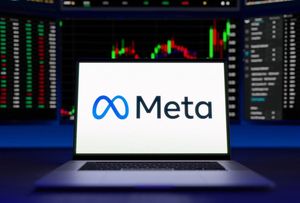
The cryptocurrency market is on the cusp of a profound transformation, driven by the expanding and increasingly sophisticated integration of Artificial Intelligence (AI). This convergence is not merely a technological upgrade but a strategic redefinition of market dynamics, promising a future of smarter, more automated, and potentially more secure digital finance. From optimizing the energy-intensive process of crypto mining to bolstering cybersecurity defenses and revolutionizing new token presales, AI is proving to be an indispensable force, reshaping investor strategies, market outcomes, and operational efficiencies across the blockchain ecosystem.
This deep integration of AI is creating a symbiotic relationship where blockchain provides immutable, transparent data essential for AI, while AI, in turn, optimizes crypto trading, governance, and security. The immediate implications are clear: increased profitability and efficiency for early adopters, a fortified defense against increasingly sophisticated cyber threats, and a more informed approach to identifying promising new crypto projects. However, this powerful alliance also presents a double-edged sword, fueling new types of sophisticated scams and raising complex ethical and security challenges that demand careful navigation.
AI's Triple Threat: Revolutionizing Mining, Cybersecurity, and Token Presales
AI's influence is permeating three critical pillars of the cryptocurrency market: mining, cybersecurity, and the intricate world of new token presales, each witnessing unprecedented advancements and shifts.
In cryptocurrency mining, AI is fundamentally altering the landscape by enhancing efficiency, sustainability, and profitability. AI algorithms are now pivotal in optimizing energy usage, balancing loads, and integrating renewable energy sources, thereby reducing the environmental footprint of mining operations. Companies like Genesis Mining, Bitmain, and Hive Blockchain Technologies (NASDAQ: HIVE) are at the forefront of demonstrating these benefits, leveraging AI for predictive maintenance to anticipate hardware failures, real-time hardware optimization for peak performance, and dynamic thermal management. A significant trend emerging is the pivot of Bitcoin mining companies, such as Cipher Mining (NASDAQ: CIFR), towards offering their infrastructure for AI and High-Performance Computing (HPC) workloads. This diversification, exemplified by Google's stake and multi-year agreement with Cipher Mining for an AI cloud platform, provides a more stable revenue stream, leveraging existing access to cheap energy and specialized data centers. The advent of autonomous "AI miners" – software bots designed to validate transactions, optimize energy use, and earn rewards without human intervention – signifies a future where mining operations are adaptive and self-sufficient. This evolution promises increased profitability and efficiency but also raises concerns about centralization and new security risks from coordinated AI bot attacks.
Cybersecurity in the crypto sector is experiencing a significant uplift through AI's advanced capabilities in threat detection, fraud prevention, and system resilience. AI, through machine learning algorithms, analyzes vast amounts of blockchain data in real-time to identify unusual transaction patterns, suspicious smart contract behavior, and anomalies that traditional security methods often miss. This proactive approach is crucial in a market constantly targeted by sophisticated cyber threats. Companies such as Chainalysis, ComplyAdvantage, and Feedzai are deploying AI models to detect money laundering, monitor multi-hop wallet flows for suspicious activity, and flag high-risk addresses. AI also plays a vital role in predictive analytics for identifying vulnerabilities within blockchains, auditing smart contracts for security flaws before deployment, and strengthening identity verification through biometric authentication. However, the "double-edged sword" nature of AI is evident here; attackers are also leveraging AI to automate ransomware campaigns, craft personalized phishing scams, and develop polymorphic malware. The first half of 2025 alone witnessed over $2.17 billion stolen in AI-enabled crypto attacks, highlighting an ongoing arms race between AI-powered defense and offense.
Finally, new token presales are being revolutionized by AI, which offers powerful tools for evaluation, analysis, and identification of promising projects in a volatile market. AI-powered platforms like CoinSchedule, CoinGecko, and Token Metrics AI are analyzing market capitalization, liquidity, investor sentiment, and developer activity for thousands of crypto projects. These tools provide automated research, real-time trading signals, and portfolio rebalancing, helping investors identify "hidden gems" and detect potential scams. AI's predictive analytics capabilities process vast market data, price patterns, and sentiment from social media and news outlets to forecast market prices and trading opportunities, leading to more accurate predictions and secure investments. Furthermore, new token presale projects themselves are increasingly leveraging AI as a core utility. Projects like DeepSnitch AI and Ozak AI are emerging, focusing on AI-powered analytics suites for traders, predictive financial signals, and seamless AI upgrades within their ecosystems. While these advancements promise more informed and efficient investment decisions, the rise of AI-powered scams, including deepfakes and sophisticated phishing bots, demands extreme caution and a rigorous focus on projects with audited credibility and clear roadmaps.
Winners and Losers in the AI-Crypto Convergence
The profound integration of AI into the cryptocurrency market is creating a distinct bifurcation among public companies: those poised to thrive by strategically adapting their business models and those risking obsolescence if they fail to embrace the AI-driven transformation. This dynamic is particularly evident across crypto mining, cybersecurity, and the new token presale landscape.
In the crypto mining sector, the most notable winners are companies strategically pivoting their operations to incorporate AI data center services. Faced with the inherent volatility of Bitcoin prices and the impact of halving events on mining rewards, these firms are leveraging their existing large-scale data centers and power contracts to meet the skyrocketing demand for High-Performance Computing (HPC) power essential for AI development. Core Scientific (NASDAQ: CORZ), emerging from bankruptcy, has announced plans to host over 200 megawatts of GPUs for AI startup CoreWeave. Similarly, Hut 8 (NASDAQ: HUT) secured a $150 million boost specifically for AI data center expansion, while Bit Digital (NASDAQ: BTBT) reportedly derives an estimated 27% of its revenue from AI, showcasing successful diversification. Cipher Mining (NASDAQ: CIFR) has made headlines with its expansion into AI hosting, securing a major deal with Google, which acquired an approximately 5.4% equity stake and guaranteed $1.4 billion of Fluidstack's financial obligations in a 10-year, $3 billion agreement. This strategic move has seen Cipher's stock surge significantly, rising over 700% from its April 2025 low. Other notable players include Iris Energy (NASDAQ: IREN), whose AI cloud service department's revenue reached $2.2 million in June 2025 with a 98% profit margin, far exceeding its mining operations, and Riot Platforms (NASDAQ: RIOT), which is evaluating transforming up to 600 megawatts of capacity at its Corsicana site for high-performance infrastructure. Hive Digital (NASDAQ: HIVE) invested $30 million in December 2024 to deploy GPUs for AI and aims for $100 million in AI revenue in 2026. Applied Digital (NASDAQ: APLD) was an early mover, transitioning to building HPC data centers since 2022. These companies are evolving from pure-play crypto mining, heavily reliant on crypto prices, to a more diversified "Mule strategy" offering HPC and AI compute services, providing more predictable revenue through long-term contracts. Investors have largely rewarded this strategic shift, leading to significant increases in stock prices. Companies that remain solely focused on traditional, undiversified crypto mining, however, face increased risk from market volatility and reduced profitability, potentially becoming relative losers.
In crypto cybersecurity, companies that can effectively integrate AI into their offerings to detect and mitigate increasingly sophisticated AI-powered threats are positioned for success. While few public companies exclusively focus on crypto-specific cybersecurity with AI, established cybersecurity firms are rapidly integrating AI to enhance threat detection, anomaly analysis, automated response, and fraud prevention crucial for protecting blockchain networks, smart contracts, and crypto exchanges. The business model for these firms increasingly revolves around AI-driven solutions to combat the evolving "AI arms race." Companies demonstrating superior AI capabilities in detecting and preventing sophisticated attacks, including those targeting crypto assets, are likely to see increased market share and positive stock performance. Conversely, firms unable to keep pace with AI-driven attack vectors or those relying on outdated security paradigms will struggle to maintain relevance and protect their clients, potentially leading to financial losses and reputational damage.
For new token presales, the winners will be companies providing AI-powered infrastructure, analytics, or services for token launches and decentralized finance (DeFi). Public companies involved in broader DeFi and Web3 infrastructure, or specialized AI platforms that cater to this market, stand to benefit. AI agents in IDO launchpads, for instance, can automate token sales, predict market trends, and enhance security through real-time fraud detection. Companies offering AI-powered predictive analytics, sentiment analysis, and automated trading bots for the crypto market will be crucial for both projects conducting presales and investors evaluating them. These tools can identify promising opportunities and improve trading efficiency, leading to more targeted investor engagement and better-timed launches. However, the presale market is also susceptible to speculative activity and regulatory uncertainties. Companies that fail to provide transparent, secure, and data-driven solutions that instill investor confidence, or those that fall victim to AI-powered scams, will find themselves losing out. The success here hinges on the ability to navigate data quality for AI models, regulatory risks, and data privacy concerns effectively.
Wider Significance: A Paradigm Shift for Finance and Regulation
The expanding role of AI in the cryptocurrency market carries a wider significance that extends far beyond individual companies, signaling a fundamental paradigm shift for the financial industry, its regulatory frameworks, and the very nature of digital assets. This convergence, often dubbed "DeFAI" (Decentralized Finance Artificial Intelligence), is not an isolated phenomenon but rather an acceleration of broader global trends where AI is becoming deeply embedded across all financial services and technology sectors.
This integration aligns with a long-standing trend of algorithmic trading and automation in finance, now supercharged by AI's ability to process vast datasets, identify intricate patterns, and execute trades with unprecedented speed and accuracy in the 24/7 crypto market. This mirrors the evolution seen in traditional financial markets, where high-frequency trading (HFT) became dominant in the 2000s. AI is also enhancing data analysis and predictive modeling across both traditional and crypto finance, leveraging real-time information from diverse sources to inform investment decisions and gauge market sentiment. Furthermore, AI's prowess in enhanced security and fraud detection is critical for both traditional and crypto financial systems, identifying anomalies, cyberattacks, and illicit activities like money laundering, thereby bolstering trust and transparency. Within DeFi and smart contracts, AI is boosting scalability, efficiency, and risk management through predictive analysis and automated financial decisions, making decentralized finance more accessible and robust.
The ripple effects on competitors and partners are substantial. Companies that effectively embrace AI gain a significant competitive advantage, offering superior predictive power, faster execution, and enhanced security, thereby forcing competitors to accelerate their own AI initiatives. This fosters an environment where innovation and differentiation become paramount, shifting the focus from speculative hype to utility-driven, technologically advanced solutions. Strategic partnerships and collaborations between AI developers and crypto firms, or even between traditional financial institutions and crypto entities leveraging AI, are becoming increasingly common. These alliances, exemplified by Ripple's institutional-grade blockchain infrastructure combining with AI-driven arbitrage protocols, aim to redefine global finance by reducing operational costs and enabling near-instant settlements. This disruption also poses challenges for traditional banking and investment models, with AI-enhanced crypto solutions threatening to outpace less efficient, manual systems.
From a regulatory and policy perspective, the convergence of AI and cryptocurrency presents a complex and evolving landscape. The decentralized nature of crypto, combined with AI's complexity, creates a fragmented environment with varying rules across jurisdictions. Regulators globally, including the U.S. Securities and Exchange Commission (SEC) and the European Union (EU), are expressing concerns about the potential misuse of AI in crypto trading and fraud, emphasizing the need for AI systems to be transparent, auditable, and not contribute to systemic risk. Specific worries include market manipulation, the "black box" problem where AI decisions are difficult to understand, and new avenues for financial crime. Regulatory bodies are engaging with technology firms to develop necessary guardrails, focusing on transparency, accountability, and the use of AI tools to improve compliance for Anti-Money Laundering (AML) and Combating the Financing of Terrorism (CFT) purposes. AI-powered tokens themselves face growing legal scrutiny, with potential classifications as securities and requirements to comply with data protection laws.
Historically, the integration of AI into cryptocurrency markets echoes the adoption of AI in traditional financial services over decades. From rudimentary algorithmic trading in the 1970s and the rise of neural networks in the 1980s for stock prediction, to the widespread adoption of machine learning and high-frequency trading in the 2000s, the financial sector has consistently adapted to AI. Recurring concerns, such as market stability and fairness, the "black box" problem of opaque algorithms, and job displacement, which accompanied AI's earlier financial applications, are now being re-examined in the context of AI-driven crypto. The evolution of fraud detection, from rule-based systems to adaptive machine learning, is also mirrored in the crypto space, leading to an ongoing "arms race" between security experts and perpetrators. This historical context suggests that while AI presents novel challenges in the crypto sphere, the financial world has a track record of adapting to such technological shifts, albeit often after periods of significant disruption and regulatory recalibration.
What Comes Next: Navigating a Future Defined by AI
The trajectory of AI's integration into the cryptocurrency market points towards a future of unprecedented efficiency, sophistication, and potential disruption. Both short-term enhancements and long-term transformations are on the horizon, demanding strategic pivots from all stakeholders.
In the short term, expect to see a continued surge in AI-powered trading and market making. AI-driven bots, already accounting for over 70% of global algorithmic crypto trading volume in 2023, will become even more sophisticated, capable of processing vast market data, predicting price movements, and executing trades in milliseconds. This will lead to increased market efficiency and profitability for those leveraging these tools. Improved security and fraud detection will also be a major focus, with AI systems detecting unusual activity, responding to threats in real-time, and bolstering smart contract audits. Optimized portfolio management will become more accessible, as AI tools analyze historical data, assess risk, and suggest optimal asset allocations, even automating yield optimization strategies across DeFi protocols. The growing optimism around AI tokens and projects, with nearly half of U.S. crypto holders believing they will outperform other sectors by 2025, indicates a strong adoption momentum for projects integrating AI with blockchain for various utilities.
Looking at the long term, the possibilities are even more transformative. We could see the emergence of smarter and more liquid markets, where AI-driven market makers enhance stability even for smaller altcoins, though this might also lead to "adversarial trading" as AIs constantly attempt to outsmart each other. The ultimate vision includes autonomous financial ecosystems where AI-powered decentralized applications (dApps) and agents manage assets, execute transactions, and optimize resources with minimal human intervention, enhancing transparency and reducing error. The energy infrastructure and operational expertise from crypto mining could be repurposed to build decentralized AI networks and compute fabrics, tokenizing computational power and data, potentially challenging the centralized control of AI resources. AI is also expected to play a significant role in AI-enhanced governance for Decentralized Autonomous Organizations (DAOs), summarizing proposals, flagging suspicious voting, and simulating outcomes to make DAOs more resilient and user-friendly. This accelerated convergence of AI and crypto is projected to create robust, hybrid computing ecosystems, potentially adding $20 trillion to the global economy by 2030.
These developments necessitate significant strategic pivots and adaptations. For crypto holders and investors, continuous education will be crucial to understand AI token use cases and navigate market volatility. Crypto miners will continue their pivot to AI infrastructure, leveraging existing energy resources for AI workloads, which offer significantly higher revenue per kilowatt-hour than traditional mining. Exchanges and institutions must adapt their offerings and risk management strategies to account for AI-driven speculation and market dynamics, integrating AI into their compliance systems. Developers and projects will need to focus on building more sophisticated, transparent, and auditable AI models with tangible real-world applications. The most likely future, however, involves a human-AI partnership, where AI handles data-heavy tasks and analytical depth, while humans provide strategic direction, ethical oversight, and long-term vision.
The market presents both immense opportunities and challenges. Opportunities include revolutionized market efficiency, new asset classes (like tokenized AI models and data marketplaces), the democratization of sophisticated tools for retail investors, and optimized DeFi protocols. However, significant challenges remain: volatility and risk management in inherently unpredictable markets, the lack of knowledge and accessibility for many potential investors, and pervasive regulatory uncertainty, especially for cross-border DeFi and AI's role in financial markets. Ethical dilemmas surrounding AI's transparency, accountability, potential for market manipulation, and algorithmic bias are paramount. Other challenges include data quality, privacy concerns, the environmental impact of energy-intensive AI models, potential job displacement, and the ongoing tension between blockchain's decentralization ideals and the increasing centralization of AI infrastructure under Big Tech. Navigating these complexities will be critical for realizing the full potential of this transformative fusion.
AI's Ascendant Role in Cryptocurrency: A Transformative Wrap-Up
The integration of Artificial Intelligence (AI) into the cryptocurrency market is rapidly evolving from a nascent concept into a fundamental force, reshaping everything from trading strategies to the underlying infrastructure of decentralized finance. This symbiotic relationship promises a future of unprecedented efficiency, security, and innovation, though it also introduces new complexities and risks that investors must carefully navigate.
Key Takeaways: AI's Impact on Crypto
The current landscape demonstrates AI's profound influence across several critical areas within the crypto ecosystem:
- Enhanced Trading and Market Analysis: AI technologies significantly boost trading efficiency by analyzing vast datasets in real-time, uncovering hidden patterns, and predicting price movements with a speed unattainable for human traders.
- Improved Security and Fraud Detection: AI algorithms are proving instrumental in fortifying cybersecurity within the crypto space, identifying suspicious activity, preventing fraud, and pinpointing vulnerabilities.
- Revolutionizing Decentralized Finance (DeFi) and Smart Contracts: AI is poised to make DeFi platforms more intelligent and adaptive, enabling AI-driven lending, investment strategies, yield optimization, and enhanced smart contract functionality.
- Optimized Blockchain Operations: Beyond trading, AI is being leveraged to improve the efficiency and scalability of blockchain networks themselves, including predictive maintenance and dynamic adjustment of consensus algorithms.
- New Crypto Projects and Ecosystems: The convergence has led to the emergence of "AI crypto" tokens, digital assets designed to fund or power AI-driven services on decentralized infrastructure, exemplified by projects like Fetch.ai, SingularityNET, and Ocean Protocol (now part of the Artificial Superintelligence Alliance - ASI).
Assessment of the Market Moving Forward
The synergy between AI and blockchain is not just a technological trend but a strategic redefinition of market dynamics. Moving forward, several key shifts are anticipated: smarter and more liquid markets, an evolving regulatory landscape with increasing focus on market fairness and security, the potential for decentralized AI models, and a growing emphasis on human-AI collaboration. AI is also expected to enhance governance within the crypto industry, helping regulators identify risks and develop effective policies.
Final Thoughts on Significance and Lasting Impact
AI's integration into the crypto market is more than a fleeting trend; it represents a fundamental shift in how digital value is created, managed, and exchanged. This convergence is poised to revolutionize the fintech industry, making financial services more accessible, efficient, secure, and personalized. The lasting impact will likely include the democratization of advanced investment strategies, a new era of intelligent blockchains and financial applications, sustainable growth driven by utility and data-driven insights, and a redefined market architecture leading to more robust and responsive systems.
What Investors Should Watch For in Coming Months
For investors looking to capitalize on this transformative period, several key areas warrant close attention in the coming months:
- Regulatory Developments: Monitor evolving regulatory frameworks concerning AI and algorithmic trading in crypto.
- Projects with Real-World Utility: Focus on AI crypto projects that offer tangible utility, innovative features, and strong underlying fundamentals rather than purely speculative ventures.
- Decentralized AI Marketplaces: Monitor the growth and performance of decentralized AI marketplaces and major alliances, such as the Artificial Superintelligence Alliance (ASI), as they aim to democratize access to AI resources.
- Transparency and Explainability of AI: Be aware of the "black box" problem. Investors should seek projects that strive for transparency in their AI algorithms and can clearly articulate how decisions are made.
- Data Quality and Integrity: The effectiveness of AI models hinges on high-quality, unbiased data. Investigate how projects ensure data integrity and address potential biases in their training data.
- Security and Risk Management: While AI enhances security, it also introduces new cybersecurity risks. Assess projects' robust security measures and their approach to managing risks associated with AI automation.
- Energy Efficiency of AI: With growing concerns about the environmental impact of AI's energy demands, watch for innovations, potentially involving quantum computing, that offer more power-efficient AI solutions within the crypto space.
- Hybrid Investment Strategies: Consider adopting strategies that combine AI-powered tools for market analysis and opportunity identification with traditional fundamental analysis to guide long-term investment decisions and diversify your portfolio. Do not over-rely solely on AI, but rather use it as a powerful aid.
The convergence of AI and cryptocurrency is not merely a technological intersection; it's an economic paradigm shift. Investors who stay informed, exercise caution, and strategically identify projects contributing real value to this evolving ecosystem will be best positioned to navigate and benefit from the intelligent future of finance.
This content is intended for informational purposes only and is not financial advice






